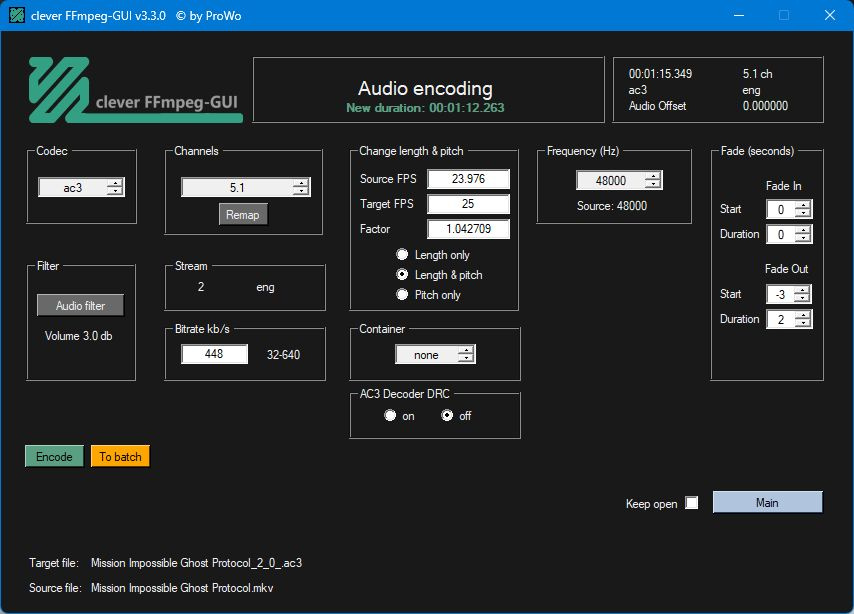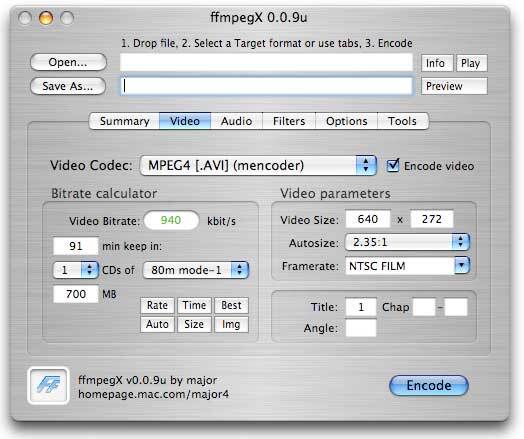

- #Ffmpeg mac download install#
- #Ffmpeg mac download manual#
- #Ffmpeg mac download code#
- #Ffmpeg mac download download#
To do so, within your Terminal window, just type the following code: ffmpeg -version

#Ffmpeg mac download install#
Now type the following code: brew install homebrew-ffmpeg/ffmpeg/ffmpegĪfter completion of the installation process, you might want to check if everything is fine with your installation of FFMPEG. Install a Basic FFMPEG version thru HomeBrewĪfter installing HomeBrew it’s time to install FFMPEG.Īt the time of writing this article the latest version is 4.3.1.
#Ffmpeg mac download manual#
A complete techcnical explanation of the command can be founded on the Additional Notes of my book and/or by visiting the Bash Reference Manual available at the GNU.org website.
#Ffmpeg mac download download#
“ Please BASH run the command within the quotes so to download and install HomeBrew from the HomeBrew’s Website onto my computer.”įor the sake of simplicity, the above command won’t be analyzed word by word.
#Ffmpeg mac download code#
The above mentioned code is a BASH command that basically says: Just open the Terminal Application on MacOS X and then paste the following code: /bin/bash -c "$(curl -fsSL )" While there are several ways to install FFMPEG on MacOS X or on Ubuntu, i suggest you to download and install one specific program called “HomeBrew” thru the Terminal Application. To access this folder on your Desktop, within Terminal, you will type: cd ~/Desktop/processed To create this folder you will type: mkdir ~/Desktop/processed In this case it will a good idea to can create a folder on your desktop and call it “processed”. You just want to make sure that everything you will output from your Terminal will be easily located on your computer, once the processes are done.įor example: you might want to process a large batch of videos. The above command means “ Change the Directory where i am located, to the user Desktop”. To access your “Desktop” directory on MacOS X, for example, you can type the following command on Terminal: cd ~/Desktop First thing to do with Terminal: choose or locate your default working directory.īy default Terminal will process your commands on the current USER directory path (aka your Home Directory). This will enable the BASH shell immediately. To do so, just type the word bash as soon as your Terminal will open, and press Enter. Please note: the latest MacOS X version use an extended version of BASH named ZSH (aka “Zed Shell “). In order to use all the tools and commands described in this book i suggest you to switch from ZSH to BASH. The Terminal application on MacOS X it’s a standard shell with a pre-installed BASH version 3. MacOS X contains a great app called “Terminal” which is inside the Utility Folder. Record a test video with your USB device /dev/video1: $ ffmpeg -i /dev/video1 -codec:v libx264 -qp 0 lossless.mp4 To get all available USB cameras connected to the system, e.g., use the v4l2 tools on a Linux machine. A USB camera is an easy way to test your video setup. More information about this can be found here.įor INPUT a valid source is needed. If you find the needed value, you can set it with: input: -analyzeduration xy -probesize xy -i INPUT. You can set the analyzeduration and/or probesize options to experiment with giving FFmpeg more leeway. , none): unspecified size: FFmpeg needs more data or time for autodetection (the default is 5 seconds).


 0 kommentar(er)
0 kommentar(er)
